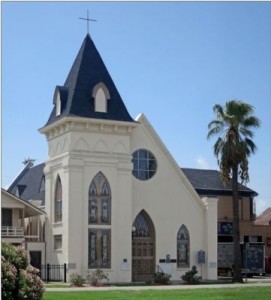“Down the Road: A Journey of 140 Years” honors women in PV’s history
In this year, we will celebrate 140 years of Prairie View A&M University. The bill creating the University was signed August 14, 1876 creating Alta Vista Agricultural and Mechanical College of Texas for Colored Youth. Though the first students to enroll in 1878 were all male, female students started attending shortly thereafter. It is with great respect that we honor the contributions of women to the institution’s legacy, growth and history.
Very little information is available on the first women known to attend or work at the University. Most of the information that is available on the earliest women came from the reports submitted annually to the governing board by the Principals who oversaw the University in its early years. To commemorate the achievements of women, the Women’s Leadership Council will present each week, women who played an important role in the history of the University.
The college employed female staff during its first year of operation. Lucinda Lee and Maria Lyle are both listed in the 1879 Annual Report as employees. Lucinda was employed as a washerwoman and Maria Lyle was employed as a cook. Both women earned $15 per month. It appears the first woman employed as a teacher was Miss M.V. Ewing who was referred to as a “preceptress, matron, etc” and the second assistant, (even though the first assistant position was vacant) at a salary of $300 per year. In this first Annual Report, the school listed 49 students attending.
Lizzie Pollard, became the first wife of L.C. Anderson, the third principal hired in 1881. She is documented as being a teacher in Travis County before coming to Prairie View. (Black Texas Women, 100.) The third Annual Report for 1885-86 lists her as the matron even though it does not provide Pollard’s salary.
Harriet F. Kimbro, was employed in 1895. According to the 1896 Annual Report, Kimbro lead the Girls Industrial Department and was paid $650 from the Morrill Fund. For this remuneration, she taught a class in the theory of household economy, two sewing classes and inspected all rooms of the female department daily.
Maud Cuney-Hare, 1874-1936
Maud Cuney-Hare, an accomplished musician, author and playwright, was born in Galveston on February 16, 1874, to Adelina (Dowdy) and Norris Wright Cuney. After graduating from Central High School in Galveston in 1890, she studied at the New England Conservatory of Music, where she graduated in 1895. Cuney-Hare also studied at the Lowell Institute at Harvard University. (Great Texas Women Online.) She taught music at the Texas Deaf, Dumb, and Blind Institute for Colored Youths in 1897 and 1898; the settlement program of the Institutional Church of Chicago during 1900 and 1901; and at (what was then) Prairie View State College in 1903 and 1904. (Women in Texas History) In 1898 she married J. Frank McKinley and they had a daughter. The marriage was short-lived and ended in divorce; their daughter died in childhood. She married William P. Hare in 1906.
Note: Read PVAMU President George Wright’s message about the anniversary here.
PV’s “Marching Storm” Voted 2015 HBCU Band of the Year
 The Prairie View A&M Marching Storm, twice voted band of the week during the football season, was voted HBCU Sports Band of the Year on Wednesday.
The Prairie View A&M Marching Storm, twice voted band of the week during the football season, was voted HBCU Sports Band of the Year on Wednesday.
In a fan poll that spanned nine days and consisted of three rounds of voting, the Marching Storm amassed over 500,000 votes.
Of the 73,266 first round votes tabulated, the Marching Storm garnered 28.26 percent of the vote, earning the No.1 seed for the final four round.
The Marching Storm faced off and topped No. 4 Alcorn State in a final four round that resulted in the PV getting 56.7 percent of the 57,626 total votes generated. Southern University’s Human Jukebox, the No. 2 seed, won the other final four voting round over No. 3 Grambling to advance to the final round.
Final round voting amassed a staggering 457,489 total votes with Prairie View accounting for (244,481 votes) 53.44 percent of the vote over Southern.
The band, under the direction of Dr. Timmey Zachery, is scheduled to compete in the Honda Battle of the Bands on Jan. 30 at the Georgia Dome in Atlanta.
USPS to issue stamp for AME church founder Richard Allen
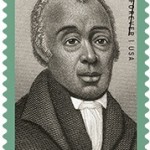 The 39th stamp in the USPS Black Heritage series will be issued on Feb. 2 and commemorate preacher, activist, and civic leader Richard Allen (1760-1831), an inspiring figure whose life and work resonate profoundly in American history. This stamp coincides with the 200th anniversary of Allen’s founding of the African Methodist Episcopal (AME) Church in Philadelphia, one of the most important institutions in African-American life, and his election and consecration as its first bishop.
The 39th stamp in the USPS Black Heritage series will be issued on Feb. 2 and commemorate preacher, activist, and civic leader Richard Allen (1760-1831), an inspiring figure whose life and work resonate profoundly in American history. This stamp coincides with the 200th anniversary of Allen’s founding of the African Methodist Episcopal (AME) Church in Philadelphia, one of the most important institutions in African-American life, and his election and consecration as its first bishop.
The stamp art is a portrait of Allen, a detail from an 1876 print titled “Bishops of the A.M.E. Church.” Featuring Allen in the center surrounded by ten other bishops and six historical vignettes, the print is from the collection of the Library Company of Philadelphia.
The Black History Month debate is back
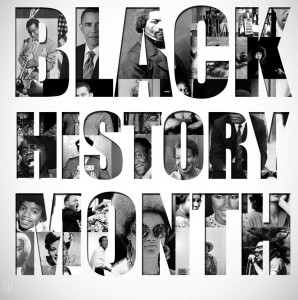 The U.S. has been officially recognizing Black History Month for 40 years, but it remains a contentious subject among both black and white Americans.
The U.S. has been officially recognizing Black History Month for 40 years, but it remains a contentious subject among both black and white Americans.
Some whites have pushed back with calls for a “Whiteness History Month,” and the occasion now produces regular headlines reflecting cultural ignorance or cynicism when it comes to black history. There have been documentaries and columns dedicated to why the concept is flawed and antiquated. And most recently, Fox News personality Stacey Dash said that it should be abolished, while making a larger argument about how race-specific organizations are counter to American values.
Arguably, the debate around Black History Month really began in earnest 10 years ago when Oscar-winning actor Morgan Freeman indignantly told “60 Minutes” co-host Mike Wallace, “I don’t want a Black History Month. Black history is American history.”
Read the MSNBC story here.
TIPHC Black History Month Exhibit, “Hallowed Grounds, Sites of African American Memories, opens Feb. 3
The Texas Institute for the Preservation of History and Culture will open a new exhibit for Black History Month on Wednesday, Feb. 3. “Hallowed Grounds, Sites of African American Memories” will be a photo exhibit of black heritage sites around Texas, including East Austin, Freedmen’s Town and Independence Heights in Houston, Reedy Chapel in Galveston, Zion Hill in Nacogdoches, Prairie View/Alta Vista, an architectural student display, and much more.
The exhibit will be on display at the TIPHC Gallery at the School of Architecture (Kennedy Building).
Reedy Chapel, Galveston First AME Church in Texas, 1886
At 1 p.m., preceding the exhibit’s opening, a panel discussion will be held in Metters Auditorium featuring historians and preservationists discussing the sites, their importance, and preservation efforts. Free and open to the public.
For more information, contact Michael Hurd, TIPHC director, mdhurd@pvamu.edu, x9836.
TBHPP Bookshelf
Published 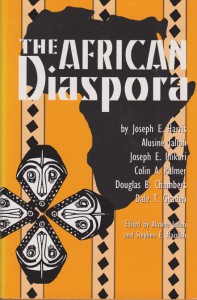 scholarship on black history in Texas is growing and we’d like to share with you some suggested readings, both current and past, from some of the preeminent history scholars in Texas and beyond. We invite you to take a look at our bookshelf page — including a featured selection — and check back as the list grows. A different selection will be featured each week. We welcome suggestions and reviews. This week, we offer, “The African Diaspora,” Edited by Alusine Jalloh and Stephen E. Maizlish.
scholarship on black history in Texas is growing and we’d like to share with you some suggested readings, both current and past, from some of the preeminent history scholars in Texas and beyond. We invite you to take a look at our bookshelf page — including a featured selection — and check back as the list grows. A different selection will be featured each week. We welcome suggestions and reviews. This week, we offer, “The African Diaspora,” Edited by Alusine Jalloh and Stephen E. Maizlish.
As Africans and descendants of slaves have sought to expand an understanding of their history,
focus on the African diaspora — the global dispersal of a people and their culture — has increased. African studies have assumed a prominent place in historical scholarship, and a growing number of non-African scholars has helped revise a discipline established over several decades.
This Week In Texas Black History, Jan. 24-30
Calendar courtesy Texas Black History Preservation Project
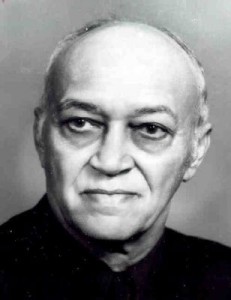 24 – On this date in 1975, J. Mason Brewer died. Brewer, considered the premier African-American folklorist of the twentieth century, was born in Goliad in 1896 and became the first author and speaker to use black American dialect extensively in front of and to all audiences, particularly when dealing with folklore. He was the first black member of both the Texas Folklore Society and the Texas Institute of Letters. His most noted works include “Aunt Dicy Tales,” and an anthology, “American Negro Folklore,” for which he won the Chicago Book Fair Award in 1968.
24 – On this date in 1975, J. Mason Brewer died. Brewer, considered the premier African-American folklorist of the twentieth century, was born in Goliad in 1896 and became the first author and speaker to use black American dialect extensively in front of and to all audiences, particularly when dealing with folklore. He was the first black member of both the Texas Folklore Society and the Texas Institute of Letters. His most noted works include “Aunt Dicy Tales,” and an anthology, “American Negro Folklore,” for which he won the Chicago Book Fair Award in 1968.
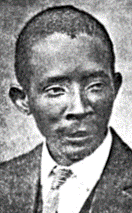 25 – On this day in 1915, Independence Heights became the first incorporated black city in Texas. Located northeast of Houston, it had a population of 600 and G.O. Burgess (pictured) was its mayor. The area was annexed to Houston on December 26, 1929.
25 – On this day in 1915, Independence Heights became the first incorporated black city in Texas. Located northeast of Houston, it had a population of 600 and G.O. Burgess (pictured) was its mayor. The area was annexed to Houston on December 26, 1929.
26 – Bessie 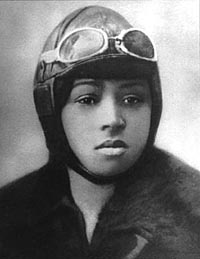 Coleman was born on this date in 1892 in Atlanta, Texas. Thwarted by racism in her quest to become a pilot, Coleman eventually went to France to train and in 1921 became the first licensed black pilot in the world. As a stunt pilot, she became known as “Queen Bess” and “Brave Bessie” in 1995 the U.S. Postal Service issued a stamp in Bessie’s honor and in 2000 was inducted into the Texas Aviation Hall of Fame. The main road to Atlanta’s airport is named Bessie Coleman Drive.
Coleman was born on this date in 1892 in Atlanta, Texas. Thwarted by racism in her quest to become a pilot, Coleman eventually went to France to train and in 1921 became the first licensed black pilot in the world. As a stunt pilot, she became known as “Queen Bess” and “Brave Bessie” in 1995 the U.S. Postal Service issued a stamp in Bessie’s honor and in 2000 was inducted into the Texas Aviation Hall of Fame. The main road to Atlanta’s airport is named Bessie Coleman Drive.
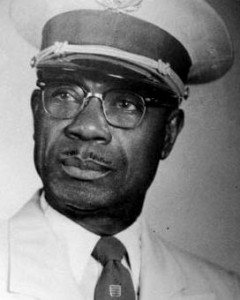 26 – On this date in 1980, former L.C. Anderson High School band leader B.L. Joyce died in San Jose, California. Joyce was born in the late 1800s in Plaquemine, La. He attended Samuel Huston College in Austin before becoming band director at Anderson High School, from 1934 to 1955. Under his leadership, the band won the state championship seven times between 1940 and 1953 at the Prairie View
26 – On this date in 1980, former L.C. Anderson High School band leader B.L. Joyce died in San Jose, California. Joyce was born in the late 1800s in Plaquemine, La. He attended Samuel Huston College in Austin before becoming band director at Anderson High School, from 1934 to 1955. Under his leadership, the band won the state championship seven times between 1940 and 1953 at the Prairie View
Interscholastic League competitions. Among his many star pupils was noted jazz trumpeter Kenny Dorham.
 26 – On this date in 1970, contemporary gospel musician and producer Kirk Franklin was born in Fort Worth. A multi-Grammy Award winner, Franklin learned to play piano as an infant and by age 11 was leading the Mt. Rose Baptist Church adult choir in Dallas. His first album, 1993’s “Kirk Franklin & the Family,” spent 100 weeks on the gospel charts (several times as No. 1), crossed over to the R&B charts, and became the first gospel debut album to go platinum.
26 – On this date in 1970, contemporary gospel musician and producer Kirk Franklin was born in Fort Worth. A multi-Grammy Award winner, Franklin learned to play piano as an infant and by age 11 was leading the Mt. Rose Baptist Church adult choir in Dallas. His first album, 1993’s “Kirk Franklin & the Family,” spent 100 weeks on the gospel charts (several times as No. 1), crossed over to the R&B charts, and became the first gospel debut album to go platinum.
Blog: Ron Goodwin, author, PVAMU history professor
Ron Good  win’s bi-weekly blog appears exclusively for TIPHC/TBHPP. Goodwin is a San Antonio native and Air Force veteran. Generally, his column will address contemporary issues in the black community and how they relate to black history. He and the TIPHC/TBHPP staff welcome your comments. In his latest blog, “Pressing Forward,” Goodwin looks ahead at the new year and the changing paradigm for academic success in the black community. Read it
win’s bi-weekly blog appears exclusively for TIPHC/TBHPP. Goodwin is a San Antonio native and Air Force veteran. Generally, his column will address contemporary issues in the black community and how they relate to black history. He and the TIPHC/TBHPP staff welcome your comments. In his latest blog, “Pressing Forward,” Goodwin looks ahead at the new year and the changing paradigm for academic success in the black community. Read it
Submissions Wanted
Historians, scholars, students, lend us your…writings. Help us produce the most comprehensive documentation ever undertaken for the African American experience in Texas. We encourage you to contribute items about people, places, events, issues, politics/legislation, sports, entertainment, religion, etc., as general entries or essays. Our documentation is wide-ranging and diverse, and you may research and write about the subject of your interest or, to start, please consult our list of suggested biographical entries and see submission guidelines. However, all topics must be approved by TIPHC/TBHPP editors before beginning your research/writing.
We welcome your questions or comments via email or telephone – mdhurd@pvamu.edu, ![]() 936-261-9836.
936-261-9836.

